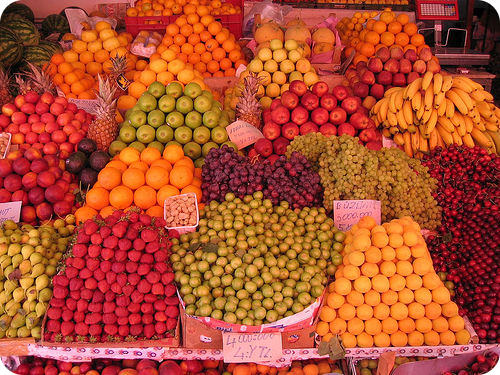7.9: Seed Dispersal
- Page ID
- 13754
\( \newcommand{\vecs}[1]{\overset { \scriptstyle \rightharpoonup} {\mathbf{#1}} } \)
\( \newcommand{\vecd}[1]{\overset{-\!-\!\rightharpoonup}{\vphantom{a}\smash {#1}}} \)
\( \newcommand{\id}{\mathrm{id}}\) \( \newcommand{\Span}{\mathrm{span}}\)
( \newcommand{\kernel}{\mathrm{null}\,}\) \( \newcommand{\range}{\mathrm{range}\,}\)
\( \newcommand{\RealPart}{\mathrm{Re}}\) \( \newcommand{\ImaginaryPart}{\mathrm{Im}}\)
\( \newcommand{\Argument}{\mathrm{Arg}}\) \( \newcommand{\norm}[1]{\| #1 \|}\)
\( \newcommand{\inner}[2]{\langle #1, #2 \rangle}\)
\( \newcommand{\Span}{\mathrm{span}}\)
\( \newcommand{\id}{\mathrm{id}}\)
\( \newcommand{\Span}{\mathrm{span}}\)
\( \newcommand{\kernel}{\mathrm{null}\,}\)
\( \newcommand{\range}{\mathrm{range}\,}\)
\( \newcommand{\RealPart}{\mathrm{Re}}\)
\( \newcommand{\ImaginaryPart}{\mathrm{Im}}\)
\( \newcommand{\Argument}{\mathrm{Arg}}\)
\( \newcommand{\norm}[1]{\| #1 \|}\)
\( \newcommand{\inner}[2]{\langle #1, #2 \rangle}\)
\( \newcommand{\Span}{\mathrm{span}}\) \( \newcommand{\AA}{\unicode[.8,0]{x212B}}\)
\( \newcommand{\vectorA}[1]{\vec{#1}} % arrow\)
\( \newcommand{\vectorAt}[1]{\vec{\text{#1}}} % arrow\)
\( \newcommand{\vectorB}[1]{\overset { \scriptstyle \rightharpoonup} {\mathbf{#1}} } \)
\( \newcommand{\vectorC}[1]{\textbf{#1}} \)
\( \newcommand{\vectorD}[1]{\overrightarrow{#1}} \)
\( \newcommand{\vectorDt}[1]{\overrightarrow{\text{#1}}} \)
\( \newcommand{\vectE}[1]{\overset{-\!-\!\rightharpoonup}{\vphantom{a}\smash{\mathbf {#1}}}} \)
\( \newcommand{\vecs}[1]{\overset { \scriptstyle \rightharpoonup} {\mathbf{#1}} } \)
\( \newcommand{\vecd}[1]{\overset{-\!-\!\rightharpoonup}{\vphantom{a}\smash {#1}}} \)
\(\newcommand{\avec}{\mathbf a}\) \(\newcommand{\bvec}{\mathbf b}\) \(\newcommand{\cvec}{\mathbf c}\) \(\newcommand{\dvec}{\mathbf d}\) \(\newcommand{\dtil}{\widetilde{\mathbf d}}\) \(\newcommand{\evec}{\mathbf e}\) \(\newcommand{\fvec}{\mathbf f}\) \(\newcommand{\nvec}{\mathbf n}\) \(\newcommand{\pvec}{\mathbf p}\) \(\newcommand{\qvec}{\mathbf q}\) \(\newcommand{\svec}{\mathbf s}\) \(\newcommand{\tvec}{\mathbf t}\) \(\newcommand{\uvec}{\mathbf u}\) \(\newcommand{\vvec}{\mathbf v}\) \(\newcommand{\wvec}{\mathbf w}\) \(\newcommand{\xvec}{\mathbf x}\) \(\newcommand{\yvec}{\mathbf y}\) \(\newcommand{\zvec}{\mathbf z}\) \(\newcommand{\rvec}{\mathbf r}\) \(\newcommand{\mvec}{\mathbf m}\) \(\newcommand{\zerovec}{\mathbf 0}\) \(\newcommand{\onevec}{\mathbf 1}\) \(\newcommand{\real}{\mathbb R}\) \(\newcommand{\twovec}[2]{\left[\begin{array}{r}#1 \\ #2 \end{array}\right]}\) \(\newcommand{\ctwovec}[2]{\left[\begin{array}{c}#1 \\ #2 \end{array}\right]}\) \(\newcommand{\threevec}[3]{\left[\begin{array}{r}#1 \\ #2 \\ #3 \end{array}\right]}\) \(\newcommand{\cthreevec}[3]{\left[\begin{array}{c}#1 \\ #2 \\ #3 \end{array}\right]}\) \(\newcommand{\fourvec}[4]{\left[\begin{array}{r}#1 \\ #2 \\ #3 \\ #4 \end{array}\right]}\) \(\newcommand{\cfourvec}[4]{\left[\begin{array}{c}#1 \\ #2 \\ #3 \\ #4 \end{array}\right]}\) \(\newcommand{\fivevec}[5]{\left[\begin{array}{r}#1 \\ #2 \\ #3 \\ #4 \\ #5 \\ \end{array}\right]}\) \(\newcommand{\cfivevec}[5]{\left[\begin{array}{c}#1 \\ #2 \\ #3 \\ #4 \\ #5 \\ \end{array}\right]}\) \(\newcommand{\mattwo}[4]{\left[\begin{array}{rr}#1 \amp #2 \\ #3 \amp #4 \\ \end{array}\right]}\) \(\newcommand{\laspan}[1]{\text{Span}\{#1\}}\) \(\newcommand{\bcal}{\cal B}\) \(\newcommand{\ccal}{\cal C}\) \(\newcommand{\scal}{\cal S}\) \(\newcommand{\wcal}{\cal W}\) \(\newcommand{\ecal}{\cal E}\) \(\newcommand{\coords}[2]{\left\{#1\right\}_{#2}}\) \(\newcommand{\gray}[1]{\color{gray}{#1}}\) \(\newcommand{\lgray}[1]{\color{lightgray}{#1}}\) \(\newcommand{\rank}{\operatorname{rank}}\) \(\newcommand{\row}{\text{Row}}\) \(\newcommand{\col}{\text{Col}}\) \(\renewcommand{\row}{\text{Row}}\) \(\newcommand{\nul}{\text{Nul}}\) \(\newcommand{\var}{\text{Var}}\) \(\newcommand{\corr}{\text{corr}}\) \(\newcommand{\len}[1]{\left|#1\right|}\) \(\newcommand{\bbar}{\overline{\bvec}}\) \(\newcommand{\bhat}{\widehat{\bvec}}\) \(\newcommand{\bperp}{\bvec^\perp}\) \(\newcommand{\xhat}{\widehat{\xvec}}\) \(\newcommand{\vhat}{\widehat{\vvec}}\) \(\newcommand{\uhat}{\widehat{\uvec}}\) \(\newcommand{\what}{\widehat{\wvec}}\) \(\newcommand{\Sighat}{\widehat{\Sigma}}\) \(\newcommand{\lt}{<}\) \(\newcommand{\gt}{>}\) \(\newcommand{\amp}{&}\) \(\definecolor{fillinmathshade}{gray}{0.9}\)
Why are seeds important?
Many important crops, such as corn, are planted and harvested as seeds. These seeds are important sources of food. For example, corn is ground into feed for chickens and cows. And corn syrup is used to sweeten beverages and candy. But most importantly, seeds are the starting point for a new plant.
Seeds and Seed Dispersal
Plants seem to grow wherever they can. How? Plants can't move on their own. So how does a plant start growing in a new area?
What is a Seed?
If you’ve ever seen a plant grow from a tiny seed, then you might realize that seeds are amazing structures. A seed is a plant ovule containing an embryo. The seed allows a plant embryo to survive droughts, harsh winters, and other conditions that would kill an adult plant. The tiny plant embryo can simply stay dormant, in a resting state, and wait for the perfect environment to begin to grow. In fact, some seeds can stay dormant for hundreds of years!
Another impressive feature of the seed is that it stores food for the young plant after it sprouts. This greatly increases the chances that the tiny plant will survive. So being able to produce a seed is a beneficial adaptation, and, as a result, seed plants have been very successful. Although the seedless plants were here on Earth first, today there are many more seed plants than seedless plants.
Learn more about seeds in the Seeds Massachusetts Institute of Technology video at https://www.youtube.com/watch?v=Qk8m3iCd4vE.
How are Seed Plants Successful?
For a seed plant species to be successful, the seeds must be dispersed, or scattered around in various directions. If the seeds are spread out in many different areas, there is a better chance that some of the seeds will find the right conditions to grow. But how do seeds travel to places they have never been before? To aid with seed dispersal, some plants have evolved special features that help their seeds travel over long distances.
One such strategy is to allow the wind to carry the seeds. With special adaptations in the seeds, the seeds can be carried long distances by the wind. For example, you might have noticed how the "fluff" of a dandelion moves in the wind. Each piece of fluff carries a seed to a new location. If you look under the scales of pine cone, you will see tiny seeds with "wings" that allow these seeds to be carried away by the wind. Maple trees also have specialized fruits with wing-like parts that help seed dispersal (Figure below).

Some flowering plants grow fleshy fruit that helps disperse their seeds. When animals eat the fruit, the seeds pass through an animal’s digestive tract unharmed. The seeds germinate after they are passed out with the animal's feces. Berries, citrus fruits, cherries, apples, and a variety of other types of fruits are all adapted to be attractive to animals, so the animals will eat them and disperse the seed (Figure below). Some non-fleshy fruits are specially adapted for animals to carry them on their fur. You might have returned from a walk in the woods to find burrs stuck to your socks. These burrs are actually specialized fruits designed to carry seeds to a new location.

Summary
- The seed contains a dormant embryo and stored food.
- Fruits are adapted to disperse seeds with the help of animals or the wind.
Explore More
Use the resource below to answer the questions that follow.
- Fruit and Seed Dispersal at http://www.youtube.com/watch?v=mGAeS8JuyBM (6:08)
- What are four mechanisms of seed and fruit dispersal?
- What is the difference between a true fruit and a false fruit? Give an example of each.
- List three ways that animals disperse fruit and seeds?
- What causes the "explosion" for the explosive dispersal of seeds?
Review
- What is a seed?
- Why was the evolution of the seed so beneficial to plants?
- Why is the vast dispersal of seeds beneficial to plants?
- What are two ways that fruits are adapted to disperse seeds?

